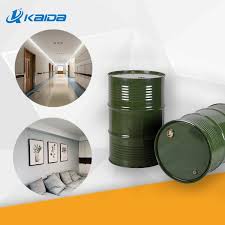
The Versatile Polyurethane Binder: A Key Ingredient in Various Applications
Polyurethane binders are essential components in a wide range of industries due to their versatility and unique properties. These binders play a crucial role in bonding materials together, providing strength, durability, and flexibility to the end products.
Applications in Construction
In the construction industry, polyurethane binders are commonly used in the manufacturing of composite materials such as particleboards, fiberboards, and insulation panels. These binders help improve the structural integrity of these materials while also enhancing their resistance to moisture and other environmental factors.
Textile Industry
Polyurethane binders are also widely employed in the textile industry for laminating fabrics, creating waterproof coatings, and producing synthetic leather. The flexibility and adhesion properties of polyurethane binders make them ideal for enhancing the performance and appearance of various textile products.
Automotive Sector
In the automotive sector, polyurethane binders are used for manufacturing car seats, interior trims, and soundproofing materials. These binders provide comfort, durability, and noise reduction capabilities to automotive components, contributing to a better driving experience for consumers.
Environmental Benefits
One of the key advantages of polyurethane binders is their eco-friendly nature. Many manufacturers have developed water-based polyurethane binders that reduce emissions and minimize environmental impact during production. This sustainable approach aligns with global efforts towards reducing carbon footprint and promoting green technologies.
Conclusion
The widespread use of polyurethane binders across various industries underscores their importance as a versatile material with numerous applications. As technology continues to advance, we can expect further innovations in the development of polyurethane binders that offer enhanced performance characteristics while also meeting sustainability goals.
Essential FAQs About Polyurethane Binder: Definition, Applications, Formulation, and HS Code
- What is a polyurethane binder?
- What is the binder for EPDM?
- What is the formulation of PU binder?
- What is the HS code for PU binder?
What is a polyurethane binder?
A polyurethane binder is a versatile adhesive material that is used to bond various substances together in different industries. It is a type of polymer that offers excellent bonding strength, durability, and flexibility. Polyurethane binders are commonly employed in construction, textiles, automotive manufacturing, and other sectors where strong adhesion properties are required. These binders play a crucial role in enhancing the structural integrity and performance of materials while also providing resistance to environmental factors such as moisture and heat. Overall, polyurethane binders serve as essential components in a wide range of applications due to their unique properties and versatility.
What is the binder for EPDM?
EPDM (Ethylene Propylene Diene Monomer) rubber is commonly bonded using polyurethane binders. Polyurethane binders are preferred for their excellent bonding strength, durability, and resistance to environmental factors, making them ideal for adhering EPDM rubber to various substrates. The flexibility and adhesion properties of polyurethane binders ensure a strong and long-lasting bond between EPDM rubber and surfaces, providing reliable performance in a wide range of applications such as roofing, automotive seals, and industrial gaskets.
What is the formulation of PU binder?
The formulation of a polyurethane (PU) binder typically consists of several key components that are carefully selected and combined to achieve the desired properties. A typical PU binder formulation includes polyols, isocyanates, catalysts, surfactants, and additives. Polyols serve as the backbone of the binder, providing flexibility and strength. Isocyanates react with polyols to form the crosslinked structure of the binder. Catalysts help control the reaction rate, while surfactants aid in foam stabilization or dispersion. Additives such as fillers, pigments, or flame retardants may also be included to enhance specific properties of the PU binder formulation. The precise combination and proportions of these ingredients are crucial in determining the final characteristics of the PU binder, such as adhesion strength, flexibility, durability, and environmental resistance.
What is the HS code for PU binder?
The Harmonized System (HS) code for polyurethane binder typically falls under the category of adhesives or glues based on their composition and intended use. The specific HS code may vary depending on the exact formulation, purpose, and application of the polyurethane binder. Importers and exporters dealing with PU binders need to correctly classify them under the appropriate HS code to ensure smooth customs clearance and compliance with international trade regulations. It is advisable to consult with customs authorities or trade experts to determine the accurate HS code for polyurethane binders based on individual product specifications.
